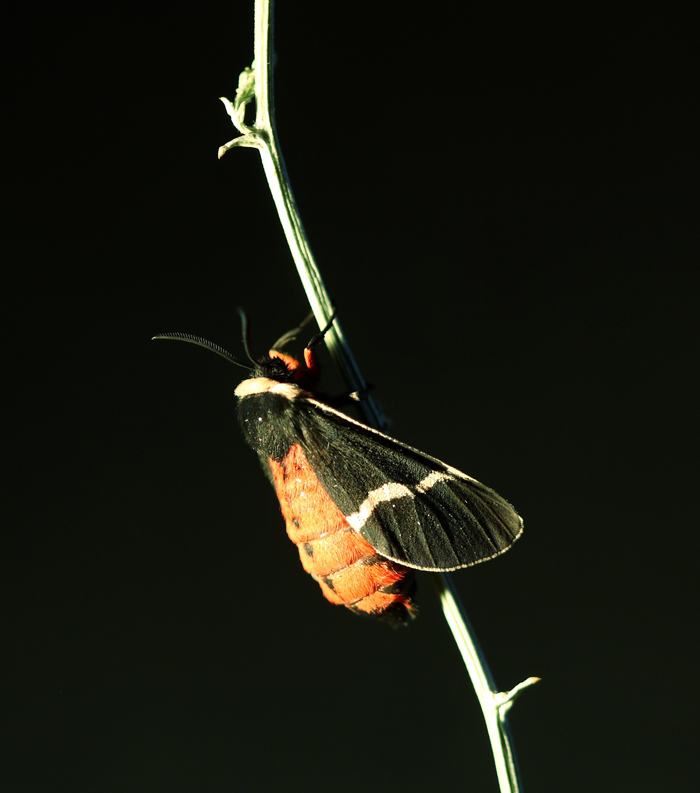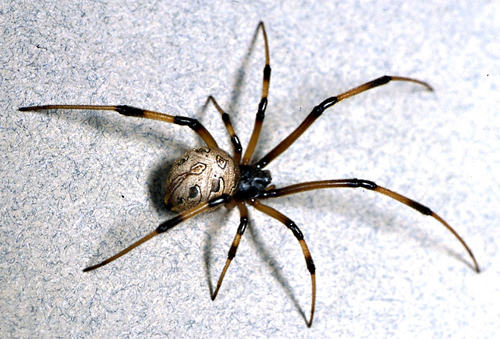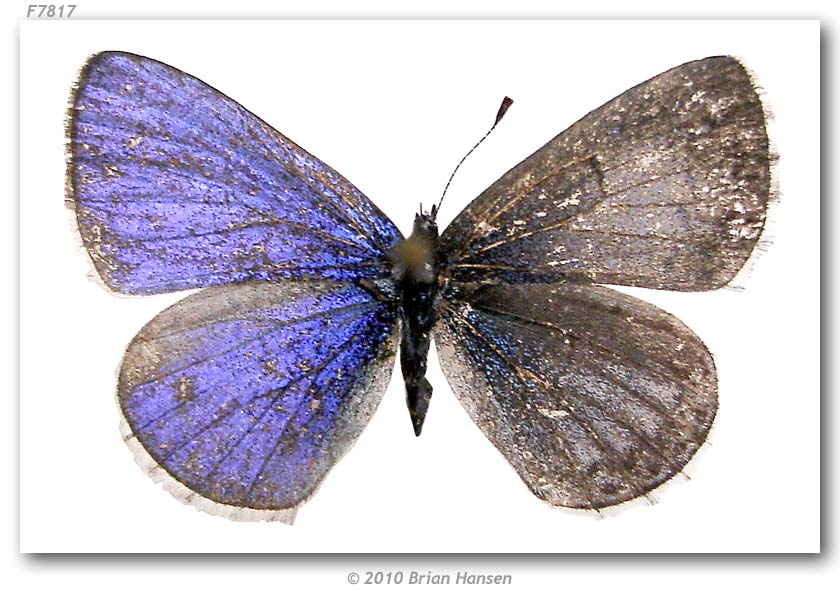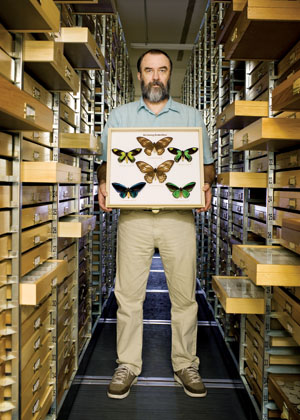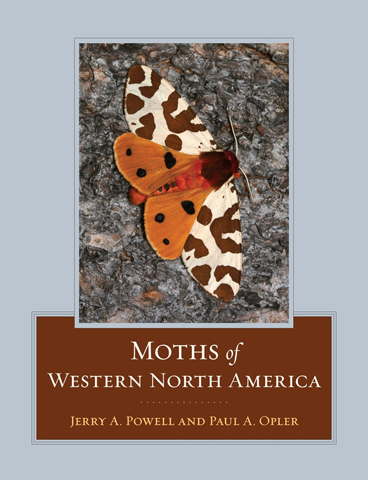Para la serie de cuestionarios que rara vez se repite, aquí hay una nueva imagen. Quien es esta polilla?
|
Para aquellos californianos que leen, especialmente los del sur, Esté atento a esta hermosa pequeña araña., Latrodectus geometricus – la viuda morena. Aracnólogos en UC Riverside están monitoreando la propagación de esta especie invasora. Irónicamente, resulta no ser tan peligroso como nuestra viuda negra nativa.. sin embargo, no es de alrededor de estas partes (debe decirse en su mejor acento sureño). Si encuentra un espécimen, especialmente si no está en los condados de LA/Orange/SD, debería contacto el equipo de la UCR. With Korea teetering on the edge of a hot war, an ecological disaster of unprecedented proportion and civil unrest in Jamaica (someone harshed their mellow) – just to name a few of todays headlines from other sources – CNN takes the time to fluff up its front page.
I usually get a little excited when I come across articles like this because I always have hopes for something so ridiculous it has to be discussed. Thankfully CNN is run by teams of drunken marmosets who like to fling crap at us. Before the Skeptical Moth epoch I would share links to cover page stories on the findings of bigfoot, chupacabra and aliens with just a few friends or spread it around facebook. Now I can ridicule CNN on a google archived medium. I just do not understand the point of this article. John Blake doesn’t discuss an explanation for this phenomenon, offer an opinion, or ask any questions. Seguro, he asks if God really cares who wins, but that question isn’t any more valid than asking if my dog (also fictional) cares what kind of car I drive (unless of course it is psychic! Seriously…people believe this). When I read articles like this I feel as if I am grading papers in a high school english class. There is no journalistic integrity, intelligent opinion or factual basis for the scribbling – there are just pretty pictures and words illustrating them. Setting the whole prayer and faith issue aside; athletes have always been known for their superstitions (another). La “acceptance speech” phenomenon undoubtedly falls under this category. After achieving a statistically small outcome (ver hot hands), they are afraid of forgetting God in fear of magically losing their ability (not necessarily consciously). For some reason Blake restrains this article to only sports – perhaps he is intentionally playing into the massive demographic of American sports loving, bud-light swilling, christians – but clearly this is a reoccurring theme. At any awards ceremony God, Jesus or Allah is usually at the top of the thank-you list. Forget all that hard work and talent you might have, it was something or someone else. Abandoning all rational thought to a mystical being is a dangerous thing. This mindset is the same one that allows addicts to blame anyone but themselves (even if addiction is in part hard-wired), believe in faith healing, start a holy war, or let the Catholic church blame the devil. CNN is flashing the lights and jingling the keys over the faces of their readers. Usually I leave it up to FOX news to insult my intelligence, but I am glad to know I have a choice in this market. A once in a lifetime occurrence, un bilateral gynandromorph. En breve, a glitch during cell differentiation creates asymmetrical chromosome patterns, which leads to asymmetrical sex expression in the adult insect. If you haven’t clicked the link above, do so, it’s an excellent description with some awesome photos. Back to the butterfly. I was in the field this March just above the middle fork of the American River on the hunt for Xanthothrix, with me was Brian Hansen and Bob Patterson. Bob and I were on a mission, to locate a remote patch of Coreopsis high on serpentine soils, and to find our rare little moth. Brian came along to enjoy the day and explore the butterfly fauna. While Bob and I hiked ahead anxious to see if the days hike would be worth it, Brian stopped frequently to net passing leps. It was probably less than an hour out from the car when we hear form behind us on the trail “Hey guys… I think I just caught a gynandromorph!!!” Aceptar, I was skeptical. Bob and I approached to see Brian holding a little blue in his hand, which unmistakably, was a bilateral gynandromorph. I was blown away. Bob has over 50 years of experience as an avid lepidopterist and has never seen one of these in the wild. To make this feat even more impressive, this small blue butterfly is one of the commonest insects in the American west in the spring. Hoy, they were puddling in great numbers along the trail, and I hadn’t even stopped to blink at one. Brian just netted a one in a million catch. Perhaps it is the curse of a jaded lepidopterist that will keep me from such once in a lifetime discovery; but I know I will be looking closer at even the commonest butterfly as it wings by me. So as you can see the butterfly is exactly half male and half female (the right side is female). If you look very closely you can even see a perfect vertical line bisecting the body if the insect (looks like a photoshop edit almost), gynandromorphism after-all is expressed throughout the entire body and even the genitalia are contorted into strange shapes. The specimen is in Brian Hansen’s personal collection, and you can find the images hosted on the Butterflies of America website. Naturalmente, it was named Phallus drewsii. This comes form the list of the top 10 species named en 2009, complied by Arizona State University (not a very good list if 7 of my new species weren’t on there…). While I tend to avoid phallic and O’Keeffesque botany, this one I couldn’t resist because it was named after someone from my own institution. Dr.. Robert Drewes now has a small phallic fungi named after him (with permission). Taxonomy humor at work. Has just been posted over at Escarabajos en el gobierno de Bush. Go over and explore the latest moth carnival, a gathering of blogs that have featured moths in one way or another over the last month or so. Noticias de la India, un fotógrafo de mariposas ha sido secuestrado. Un funcionario del parque local que visitaba la provincia nororiental de Arunachal Pradesh fue secuestrado de noche por una banda de jóvenes rebeldes armados.. Los esfuerzos para encontrarlo se han visto obstaculizados por el clima y el terreno remoto.. India se ha convertido recientemente en uno de los países más difíciles para realizar investigaciones en, y ahora todos recordamos su continua historia de violencia. A menudo, se encuentra dentro de las partes remotas y salvajes de un país en desarrollo que alberga tanto una asombrosa biodiversidad como disidentes militantes.. Mientras estaba en Ecuador, mi grupo estuvo atento a los rebeldes colombianos de las FARC que podrían haber cruzado la frontera.; Afortunadamente, solo había una posibilidad de que estuvieran allí en primer lugar., y no se vio nada. Creo que parte de mi trabajo de campo más desgarrador ha sido a lo largo de los estados fronterizos entre Estados Unidos y México y en el propio México.. Los traficantes de drogas prefieren dispararte antes de pedirte que te apartes de su camino., y bandidos errantes fueron los responsables del asesinato de un compañero amigo en Oaxaca años atrás. No es de extrañar, el atractivo de la biodiversidad sin explotar sigue atrayéndonos. Mantente a salvo en el campo! Over a long weekend I’ll be out in the field. Stay tuned for incredible stories (no hype here…). While I’m away enjoy the following from other excellent bloggers:
For those who are not aware, a new book hit the market at the end of last year. “The Moths of Western North America“, Powell and Opler. At only $95 it’s worth every cent (o $75 for the e-book, but I hate e-books). It’s a remarkable tome and the first of its kind for the western states. Not only is it a spectacular reference, but it sets the bar for all insect books. No, not every moth in the west is in there (that would break my desk and wallet at over 6,000 especies), but almost one of every genus and common or remarkable species has a photograph, life history and distribution. Most importantly it covers microlepidoptera. I grew up on the eastern counterpart, Moths of Eastern North America by Covell. I had two copies, one for the field and one for my desk – and had to replace the field copy at least once. It was a great book, but Powell and Opler have run laps around it. The other good news is you can now access all 1,228 moth illustrations and corresponding data online for gratis. Go to CalPhotos and search for Powell, o click here. The nice part about this is the somewhat smaller microlep photos in the book are available in high-resolution for better identification. Beautiful addition to the reference and easier than sending everyone a CD. |
Escepticismo |
